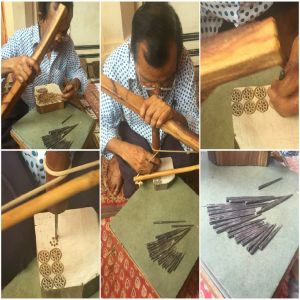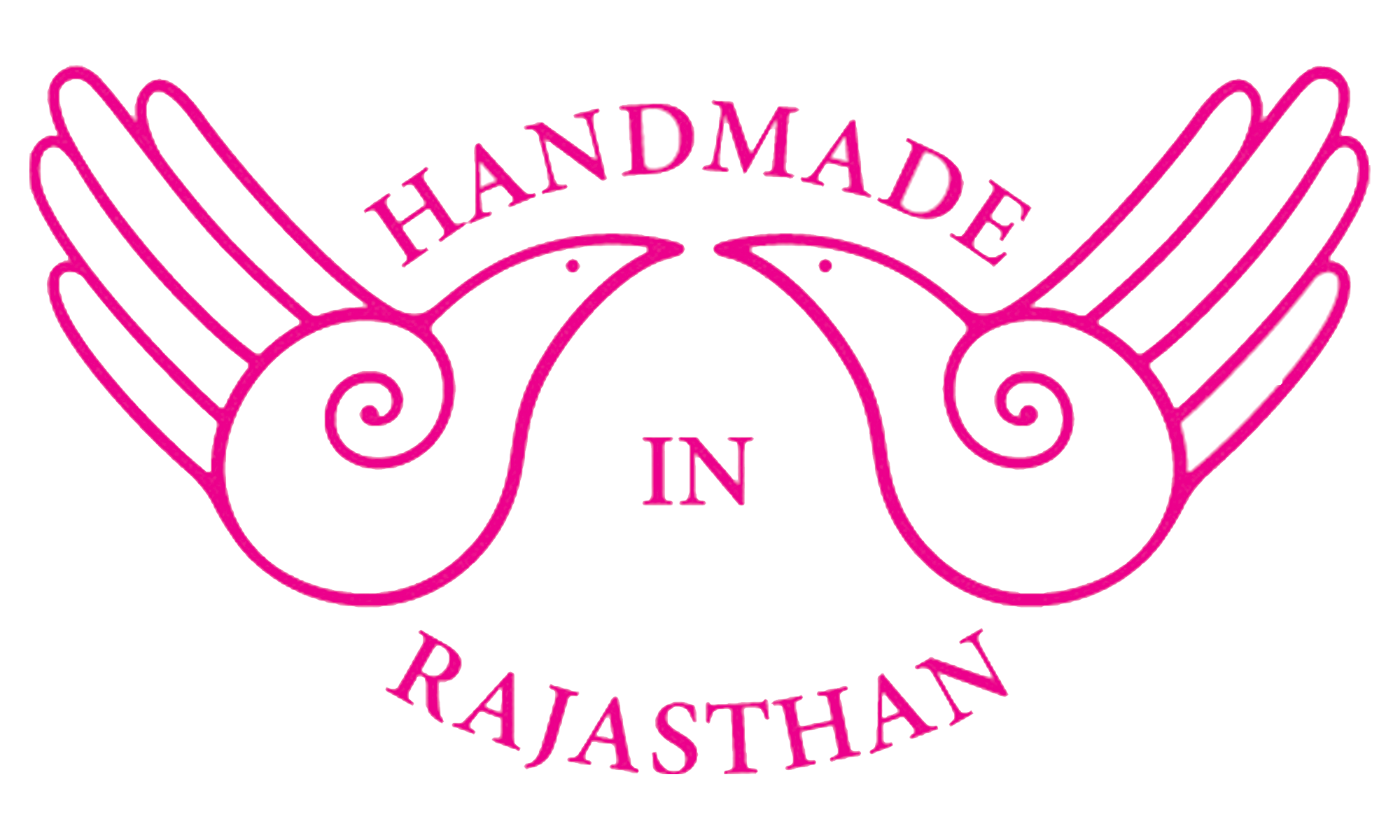- Home
- About US
- Art and Craft
- Artisans
- Master Crafts Persons
- Supporting Institutions
- News and Events
- Schemes
- Contact us
- Contact

The Tradition of making hand-printed textiles is widely practiced in Rajasthan and is characterized by the use of imprints of geometric as well as stylized floral and animal forms. Thus, there are craft clusters that specialize in making blocks for block printing. These follow a specific grammar which consists of lead block, known as the rekh, the datta or the foreground filler block and the gadh, the background or blotch block. The specialty of the blocks from Jaipur is the depth and intricacy of the carving, which allows for a cleaner surface and clearer printing. Also peculiar to Jaipuri blocks is the numnber of air passages, or pavansar, drilled through the blocks to ensure circulation of air in the block during the printing thus preventing the fabric from lifting when the block is raised. Due to its innate strenght, blocks made of sheesham may last through 200 metres of printing and are therefore generally used for the outline or rekh blocks. Due to high cost of teak wood it is gradually being replaced by cheaper woods such as Roheda and Bhujan. The carved rekh or outline block includes the minute details of the pattern including the veins of the leaves and the individual petals.
Earlier, the society promoted the model of self-sufficiency wherein the work was divided between communities and they depended on each other for livelihood. Just as ‘Chippas’ did printing work; ‘Neelgar’ did indigo dyeing; Bhatkada community specialized in the craft of block making for they not only had command over the craft but had the experience and expertise of many generations. In local language, ‘bhatt’ refers to block and ‘ghar’ to the carver and ‘Bhatt-ghar’ as a carpenter who specializes in block making. This community came from Multan, presently in Pakistan, under the patronage of Maharaja Sawai Jai Singh and settled in Sanganer in the 18th Century. It being a Muslim community, many of the families shifted back during partition post independence. Earlier there were entire community practicing this craft but today only a handful of families are into making of blocks. The sad part is the transfer of skill from one generation to the other is not happening as they no longer perceive this work to be monetarily gratifying. As a result, the traditional skill and craftsmanship is on a decline and we are losing valuable information in the process. However newer people are getting attached to this craft but they do lack the experience and expertise to make a finished quality block.

